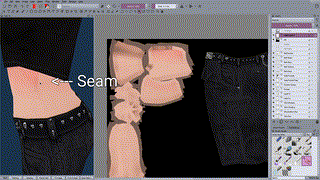Hi all,
I was doing some texture painting recently and i was using an old painting program for that (PSP7). However going back and forth from the program and Blender to check out the texture was a PITA and decided to check if Krita (being newer and all) had some sort of “3d mode” in views so i could paint directly on the model, like in Blender but with layers, selections, copy/paste, etc - and sadly learned that this is not the case.
Supposedly this is something the devs (based on an older forum post i found) want to add at some point but in the meanwhile i decided to make a stopgap solution with a plugin written in Python that displays the currently edited document in an OpenGL viewport that you can rotate, pan and zoom so you can at least avoid the whole “export PNG, alt+tab to Blender, reload texture, notice the mistakes, alt+tab to paint app, do modifications while trying to imagine how they’d end up, export PNG, alt+tab to Blender, reload texture, notice your imagination is lacking, etc” cycle.
You can find the plugin here: Krita View3D Plugin
A very brief YouTube video with it in action: https://www.youtube.com/watch?v=PMsI8P2YCnU
The functionality the plugin provides is:
-
The aforementioned model viewing
-
Draw “blobs” by alt+clicking on the model (it isn’t exactly painting on the model itself but can help find where things are in an image)
-
Create a new image with the current render
-
Backproject a layer from the previously created image to the current image in a new layer (can help with doing some indirect painting on the model)
Some limitations are that the whole backprojection is slow (everything is done in Python) and not very accurate, especially if you zoom out the model (you’ll get gaps between pixels in the texture). Also no undo for blob painting since Krita does not provide a way to do that (make a new layer to draw blobs in to avoid damaging the existing image).
Note that the plugin is very rough as i primarily made it for my own use but thought about sharing it. I only tested it on my own PC running Linux and it may or may not work with other systems (i think it may not work with Intel GPUs and probably also macOS).




